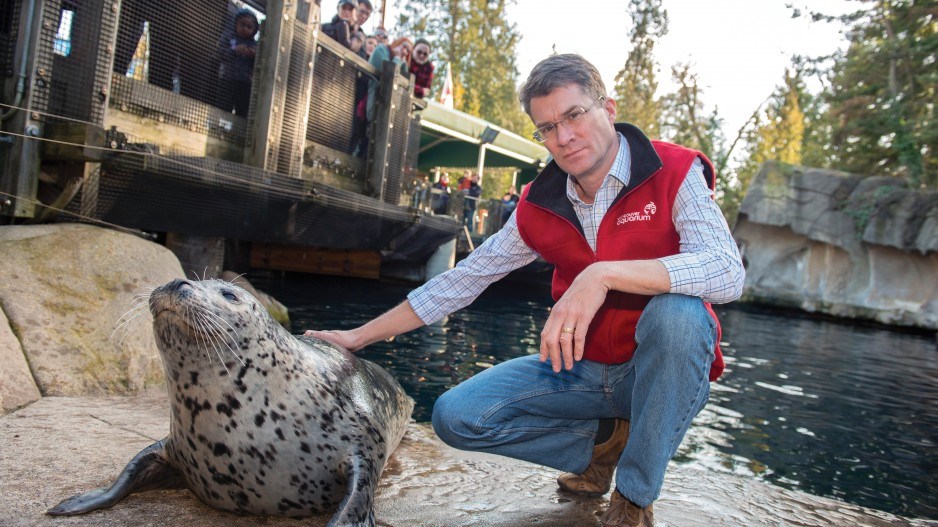The next time you toss your fleece jacket into the laundry consider this: tiny micro-beads of plastic may start making their way through our water systems into the ocean food chain only to end up in your salmon dinner.
Besides plastic beads, there are hormones and other medications and chemical pollutants – contaminants that work their way up the food chain, said Andrew Day.
“Orcas have some of the highest pollutant levels of any creatures; polar bears, belugas too. They can cause a decrease in the immune system right down to severe brain malfunction. Those who rely on marine mammals for food, such as aboriginal people eating traditional diets, are all ingesting contaminants.”
Day is executive director of the Coastal Ocean Research Institute, recently launched at the Vancouver Aquarium Marine Science Centre. The institute is an independent facility that collects and analyzes data about the coastal ocean environment in order to better understand and manage it.
Day said this type of oceanographic research has been going on for 35 years but has never been organized under one umbrella before. The institute’s mandate is to collaborate with governments, academia and industry in its study of coastal ocean health.
“The world is changing and we need to collect as much information as we can and look at new opportunities for solutions,” said Peter Ross, founding director of the Ocean Pollution Research Program, which was rolled into the aquarium’s new institute. “There’s a whole army out there aware that we need this information.”
Ross acknowledges that new materials on the market – such as fleece made from recycled plastic bottles – are just the tip of the iceberg when dealing with ocean conservation.
“As a toxicologist, I see 100,000 chemicals on the market,” Ross said, adding that key work is done identifying which foreign ocean bodies are contaminants (defined as man-made chemicals that end up in the environment) and which are pollutants (contaminants that cause toxicity). It’s the toxicity that can wreak havoc with ocean life and coastal businesses.
“What consumers will feel is a mixed bag of consequences,” Ross said. “You may or may not be able to eat your favourite species because it’s not safe; or you may not get that species at all because it’s suffering due to excessive pollution in the ecosystem.”
Ross will be speaking about his research at the International Aquarium Congress, September 25-30, 2016. The congress meets every four years to discuss new developments in research, technology, management, education, conservation and sustainability. Vancouver was chosen as the host city for 2016, so the Vancouver Aquarium sets the agenda.
“We said we’re going to use the opportunity to give an overview of what’s happening in the oceans,” said aquarium president John Nightingale. “We’ll be discussing the rise in sea levels and pH (potential of hydrogen) balance, issues of fish population, pollution, coral reefs and climate modelling, for example.”
While toxins and pollutants are key in the discussion of ocean conservation, Nightingale said not to forget certain industry practices that can cause problems as well.
“There can be overfishing or mal-fishing, where trawling damages the ocean floor,” Nightingale said. “And there’s also the impact of coastal development around the world. The population of the global coastal area is more than two billion people.”
Sewage treatment is a topic that riles Steve Pocock, president of the BC Shellfish Growers Association.
“It’s a concern when we still have that municipalities, like Victoria, [that] are not treating sewage in a satisfactory manner,” said Pocock, adding that different types of pollution are affecting B.C.’s multimillion-dollar shellfish industry.
“At the juvenile level, just when the shell is forming, it’s vital the pH is in the correct balance,” he said. “That’s proven a problem in hatcheries.” (pH is a scale of acidity.)
But Pocock cautions not to jump to conclusion about cause and effect when it comes to ocean contaminants. There are naturally occurring bacteria that can also cause damage to shellfish production. These can rise to unsafe levels as the water temperature rises.
That’s why sharing research is key to finding appropriate solutions, he said.
“We’re working with Oceanwise and the Aquarium, the Hakai Institute and the [Department of Fisheries and Oceans] DFO collecting data. If we can correlate data to see a trend, we can determine our next steps.”




